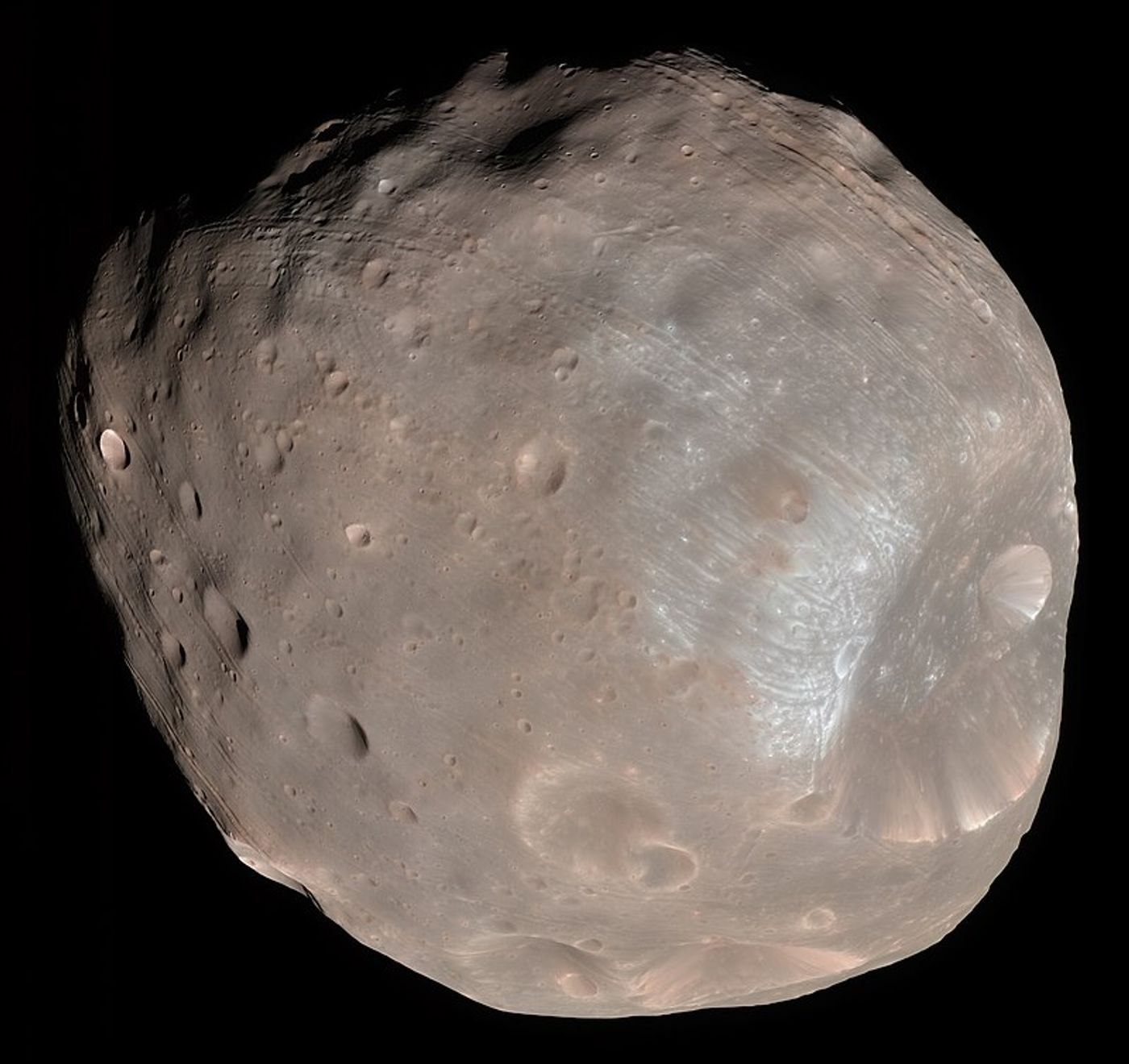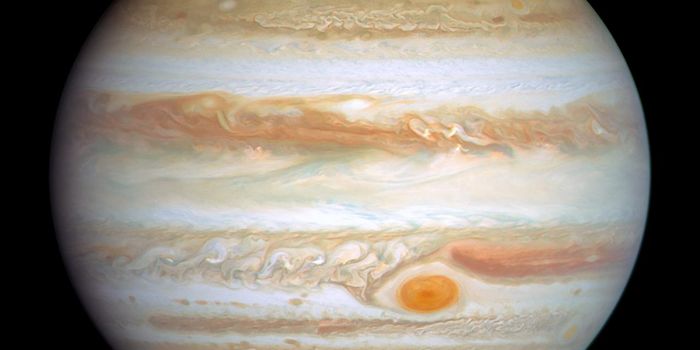Solar System Moons: Phobos and Deimos
While there are over 200 moons in our solar system, only three exist around the inner terrestrial planets, and two belong to the planet Mars. These two are Phobos and Deimos, and they are small, potato-shaped moons that were discovered by American astronomer Asaph Hall in 1877. Spacecraft images show their appearance as being similar to asteroids, which has led scientists to hypothesize that they were both captured objects, rather than having been formed from a collision like the Earth’s moon. However, their origin is still up for debate.
Phobos, the larger moon, orbits Mars with an average distance of 5,826 miles (9,377 km) and has dimensions of 17 x 14 x 11 miles (27 x 22 x 18 kilometers) and takes about one-third of a day to complete one orbit. Its orbit is so close to Mars that there are certain locations on the planet where Phobos can’t be observed. Its orbit is currently decaying (getting smaller) at a rate of six feet (1.8 meters) every century, meaning it will eventually crash into Mars or break up in orbit and form a ring around the Red Planet, much like how Saturn got its rings. Scientists believe this won't happen for another 50 million years from now.
Deimos orbits Mars with an average distance of 14,562 miles (23,436 kilometers) and has dimensions of 9 x 7 x 6.8 miles (15 x 12 x 11 kilometers) and takes just approximately one and a quarter day to complete one orbit around the Red Planet. Deimos is much darker than Phobos, possibly owing to its C-type surface materials.
No spacecraft have landed on either moon, but the Japanese Aerospace Exploration Agency (JAXA) is currently scheduled to launch the Martian Moons eXploration (MMX) mission in 2024 with the hopes of sampling Phobos and returning these samples to Earth a few years later while also learning more about the possible origin of both moons, as well.
Sources: NASA, NASA (1), IFLScience, NASA (2), The Nine Planets, JAXA,
As always, keep doing science & keep looking up!
Featured Image: Composite image of Phobos (left) and Deimos (right). (Credit: NASA/JPL-Caltech/University of Arizona)










